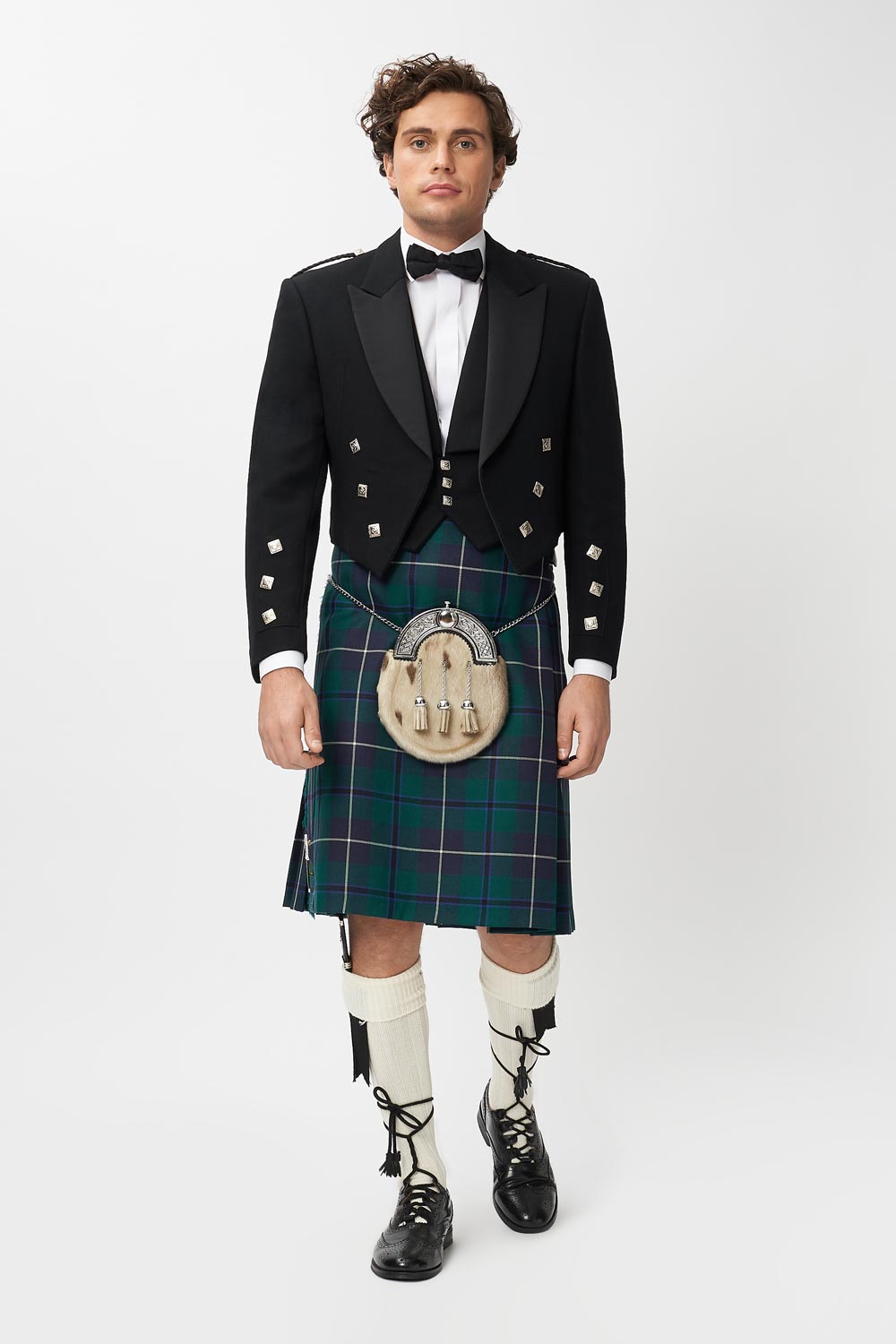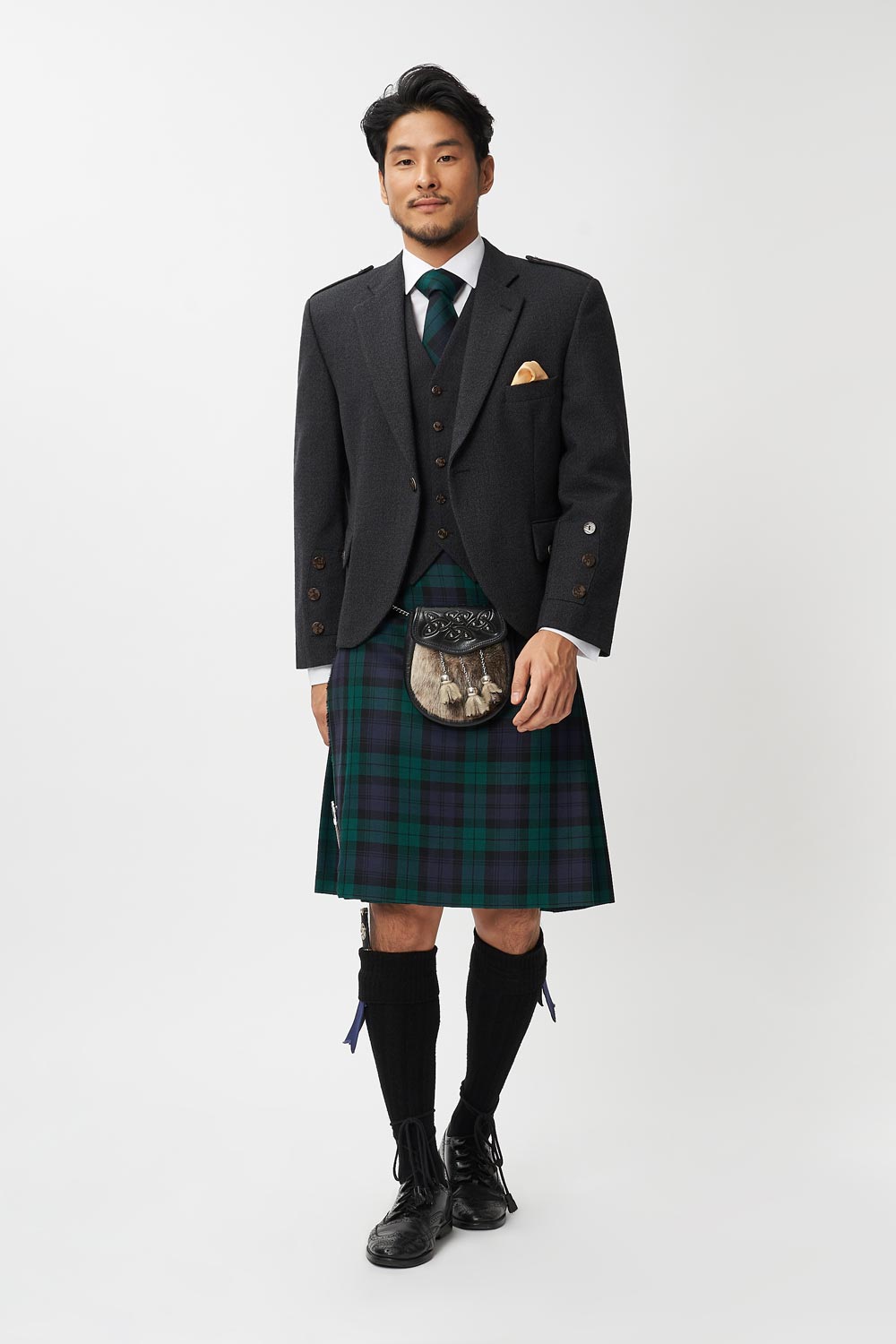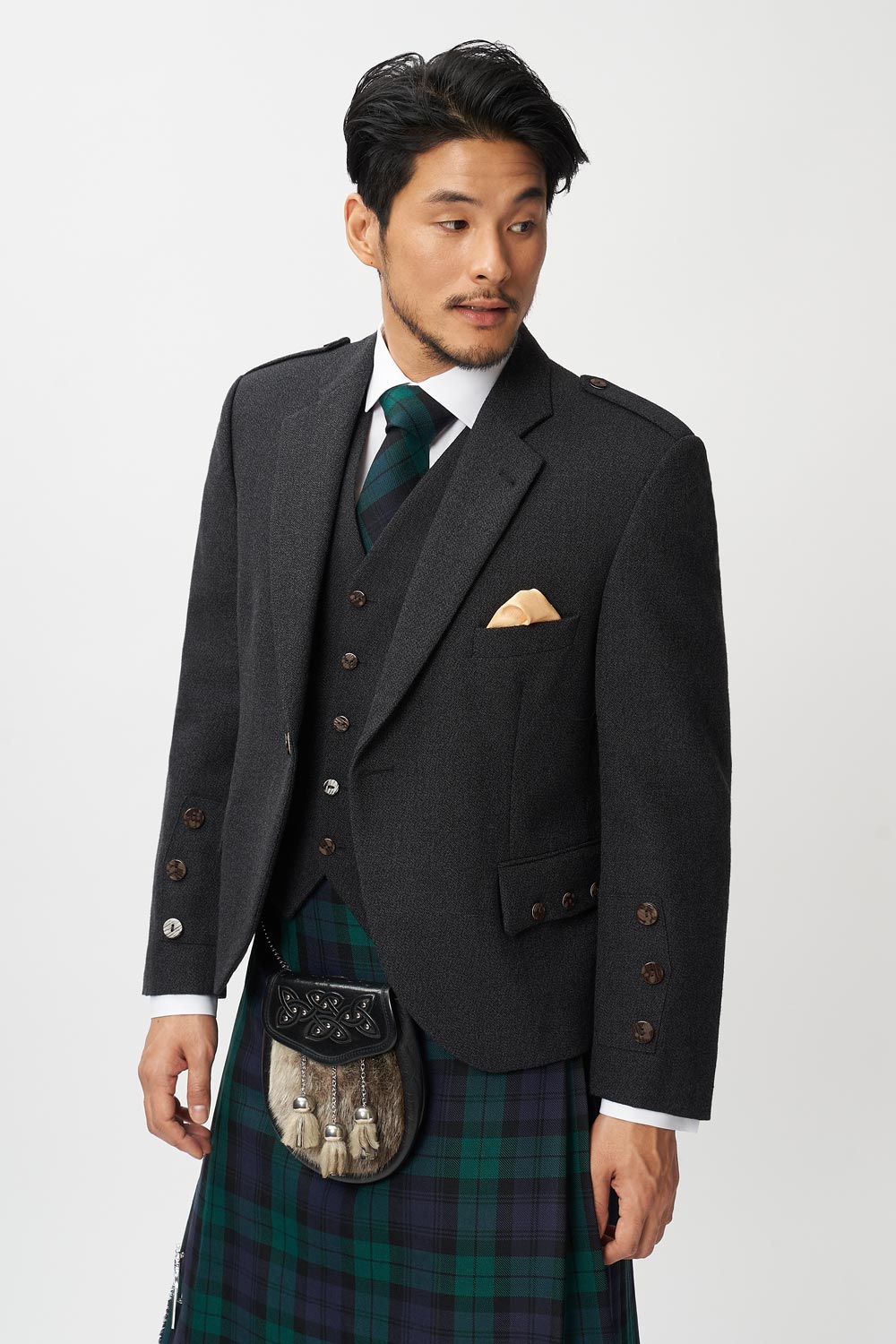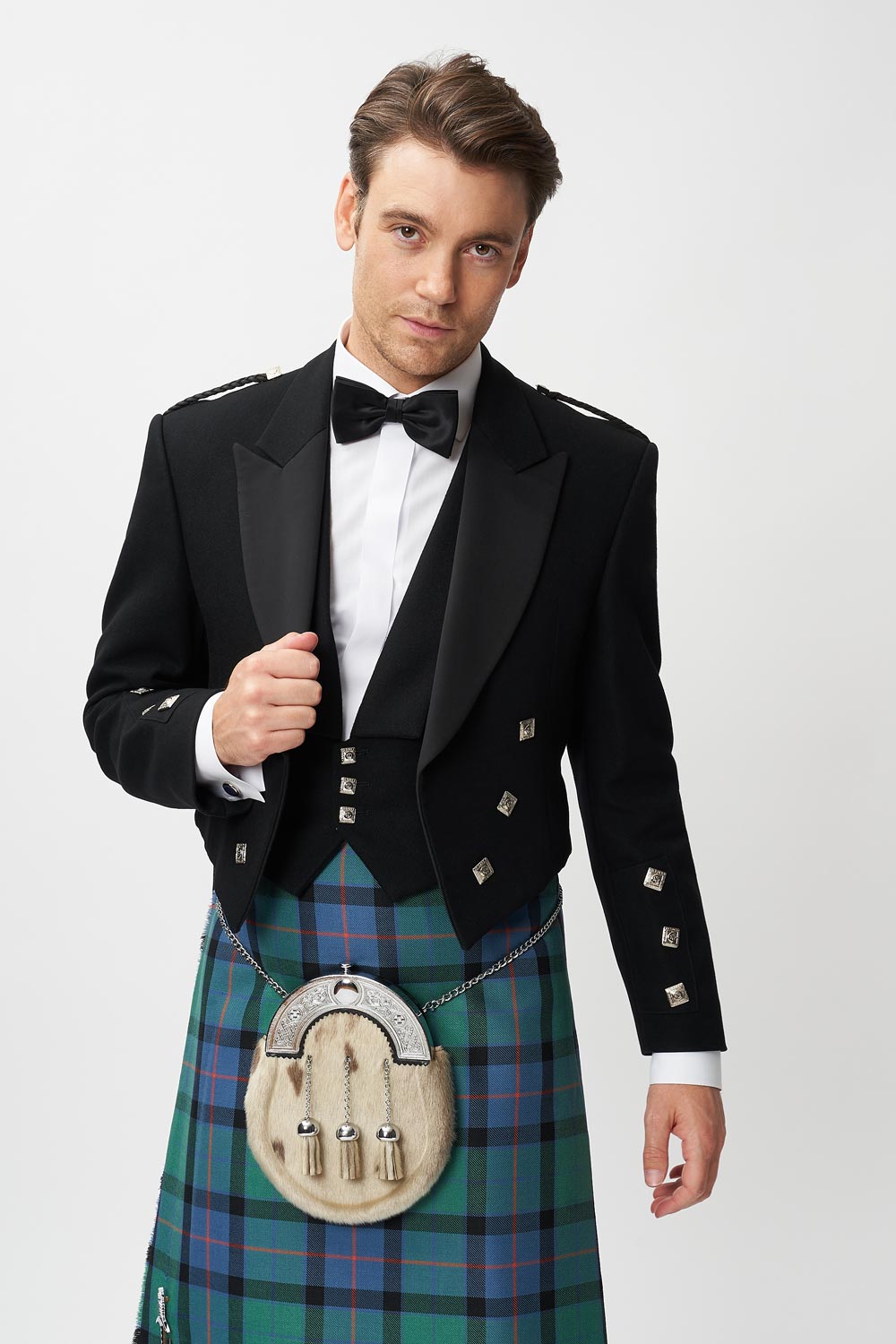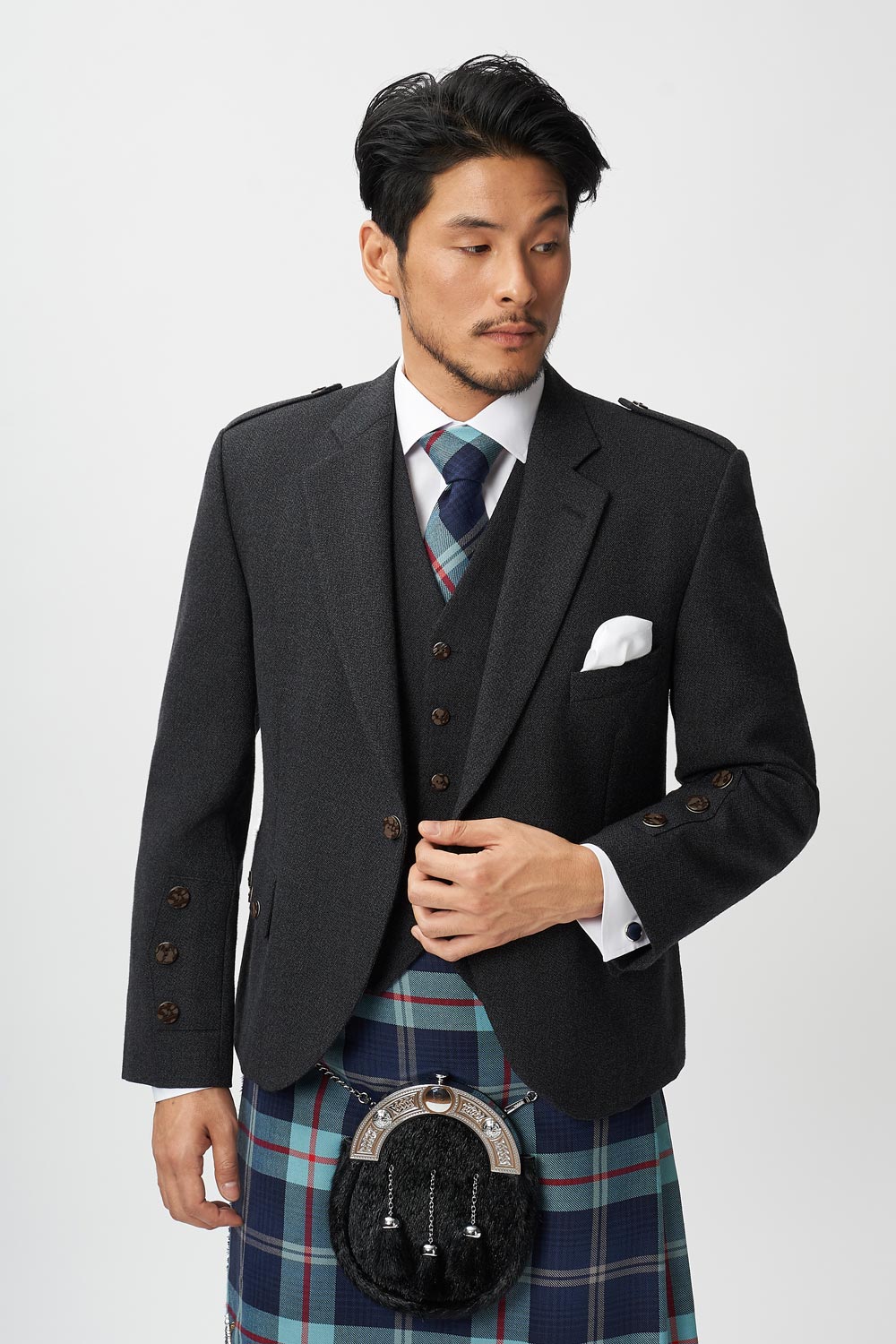Kilt Hire FAQ
What is a kilt?
A kilt is a type of traditional Scottish garment worn by men. It is a knee-length skirt made of a heavy, pleated fabric wrapped around the waist and secured with a kilt pin. Kilts are usually made of wool and come in various tartan patterns specific to particular Scottish clans or families.
Kilts are often worn with a sporran (small leather pouch), a kilt belt, and a jacket, along with other traditional accessories such as a sgian dubh (a small knife tucked into the sock) and a kilt pin. Kilts are most commonly associated with Scotland and are a popular symbol of Scottish heritage, but they are also worn by people of Scottish descent worldwide.
Where did kilts originate?
Kilts originated in Scotland as part of the traditional Highland dress. The exact origins of the kilt are uncertain, but it is thought to have evolved from the belted plaid, a large piece of cloth worn wrapped around the body and belted at the waist, which was commonly worn by Scottish Highlander men in the late 16th and early 17th centuries.
Over time, the belted plaid evolved into the kilt as it is known today, with the fabric tailored into distinct pleats and the excess cloth fashioned into a large flap called an apron.
What do you wear under a kilt?
Traditionally, it is considered appropriate to wear nothing under a kilt. The kilt is designed to be worn as a single piece of clothing, wrapped around the body, and secured in place with a kilt pin. The lack of undergarments symbolizes the wearer's bravery and trust in the kilt's ability to keep them adequately covered. However, some people may wear underwear under their kilt for personal comfort or practical reasons. Ultimately, the decision of what to wear under a kilt is a personal one.
Do you wear a kilt belt with a waistcoat?
It is not necessary to wear a kilt belt with a waistcoat, but some people choose to do so for aesthetic purposes or to help keep the kilt in place. When wearing a waistcoat, it is common to tuck the kilt's waistband under the waistcoat, which helps to keep the kilt in place and creates a neat, polished look. Whether to wear a kilt belt or not is a matter of personal preference, and there are different opinions on the matter. If you do decide to wear a belt, choose one that complements the colours and style of your kilt and waistcoat.
How do I measure for a kilt?
Measuring for a kilt involves taking several key measurements to ensure the proper fit. Here's how to measure for a kilt:
- Waist measurement: Measure around the widest part of the natural waist, typically at the navel level. This will be the measurement for the kilt's waistband.
- Hips measurement: Measure around the fullest part of the hips, typically about 8 inches below the waist. This measurement will help the kilt maker determine the correct length.
- Kilt length: Stand straight with your feet slightly apart. Measure from the waistband to the top of the kneecap. Kilts are traditionally worn with the bottom edge of the kilt just above the knee.
- Seat measurement: Stand straight with your feet slightly apart and measure around the fullest part of the seat, typically about 8 inches below the waistband. This measurement will help the kilt maker determine the correct drape of the kilt.
- Height measurement: Measure from the top of the head to the floor without shoes.
It's essential to take accurate measurements to ensure the best fit possible. If you need help with measuring or are not comfortable carrying out your own measurements, consider having someone help you or visiting a kilt maker for assistance. Once you have taken these measurements, you can provide them to a kilt maker or retailer who can assist you in selecting the right kilt size and style for your body type and personal preference.
How do I wear a kilt?
Wearing a kilt is a traditional Scottish outfit that is now worn all over the world. Here's how to wear a kilt:
- Undergarments: A kilt is traditionally worn without underwear. If you choose to wear underwear, go for a pair of kilted hose or a kilt hose flash.
- Kilt: The kilt should be worn at the natural waist, with the pleats at the back and the apron at the front. The kilt should cover the knee and the top of the kilt hose.
- Sporran: A sporran is a type of pouch that is worn with a kilt. It should be worn in the center of the apron, over the kilt.
- Sash: A sash or a belt can be worn over the kilt to keep it in place and add a touch of color.
- Shirt: A white shirt with a traditional collar is the standard shirt to be worn with a kilt.
- Jacket: A traditional Scottish jacket, such as a Prince Charlie jacket, is worn over the shirt.
- Shoes: Black leather shoes, such as Ghillie brogues, are traditionally worn with a kilt.
It's important to note that different kilt traditions may have slightly different requirements for wearing a kilt.
How do I wear a kilt casually?
Wearing a kilt casually can be a fun and stylish way to incorporate traditional Scottish attire into your everyday wardrobe. Here are some tips on how to wear a kilt casually:
- Choose a casual kilt: Look for a kilt made of lightweight, breathable materials, such as cotton or linen, in a more casual tartan pattern.
- Pair it with a casual shirt: Choose a t-shirt or casual button-up shirt in a solid colour to complement the pattern of your kilt.
- Accessorize: Consider adding a belt, sporran (small leather pouch), and a pair of socks in a coordinating color to complete the look.
- Footwear: Opt for a pair of sneakers or casual shoes for a relaxed look.
- Be confident: Wear your kilt with pride and confidence, no matter the occasion.
Remember, wearing a kilt is all about personal style and comfort. Feel free to experiment with different combinations of tops, accessories, and footwear to find the best look.










